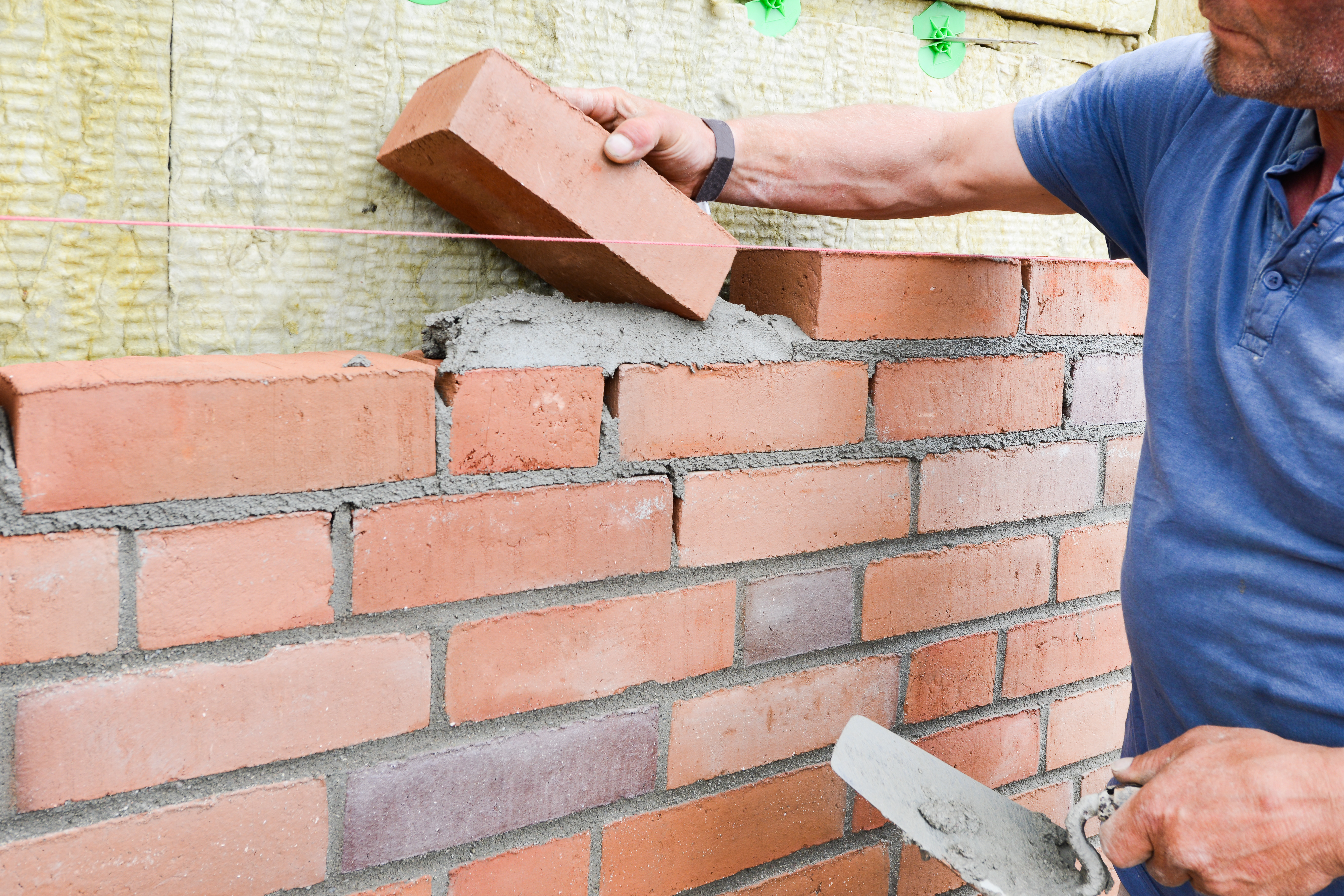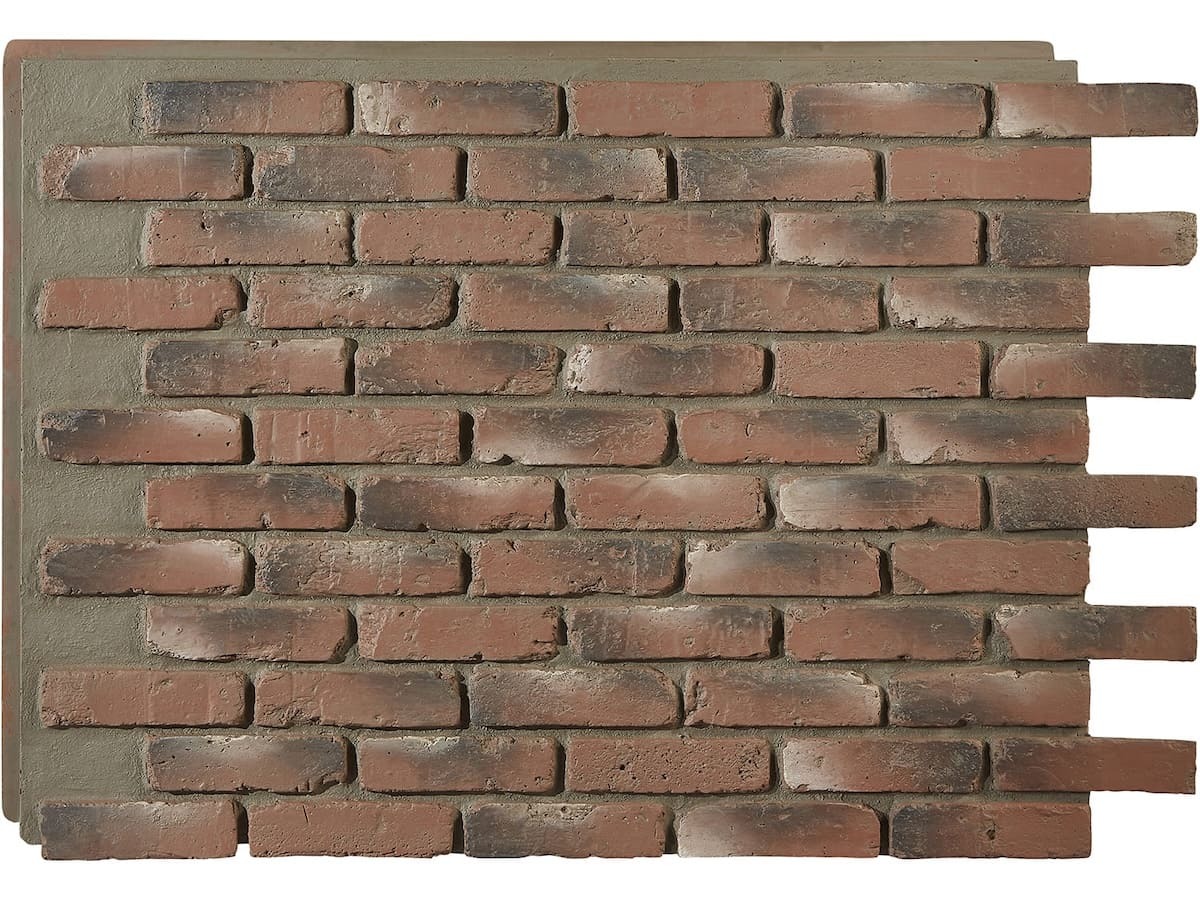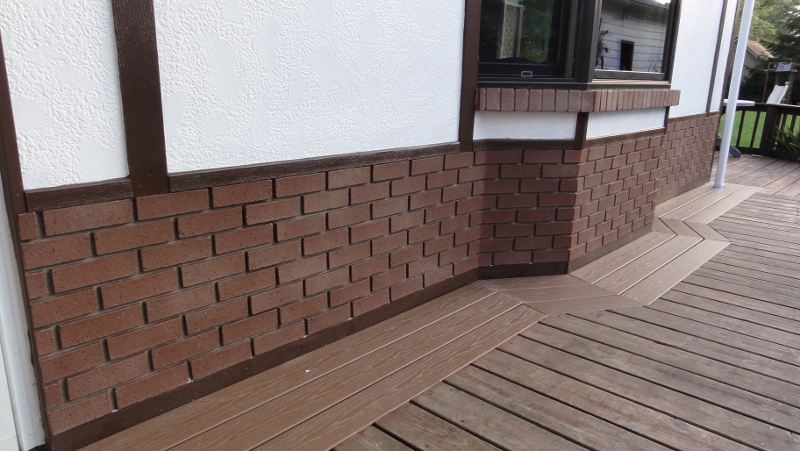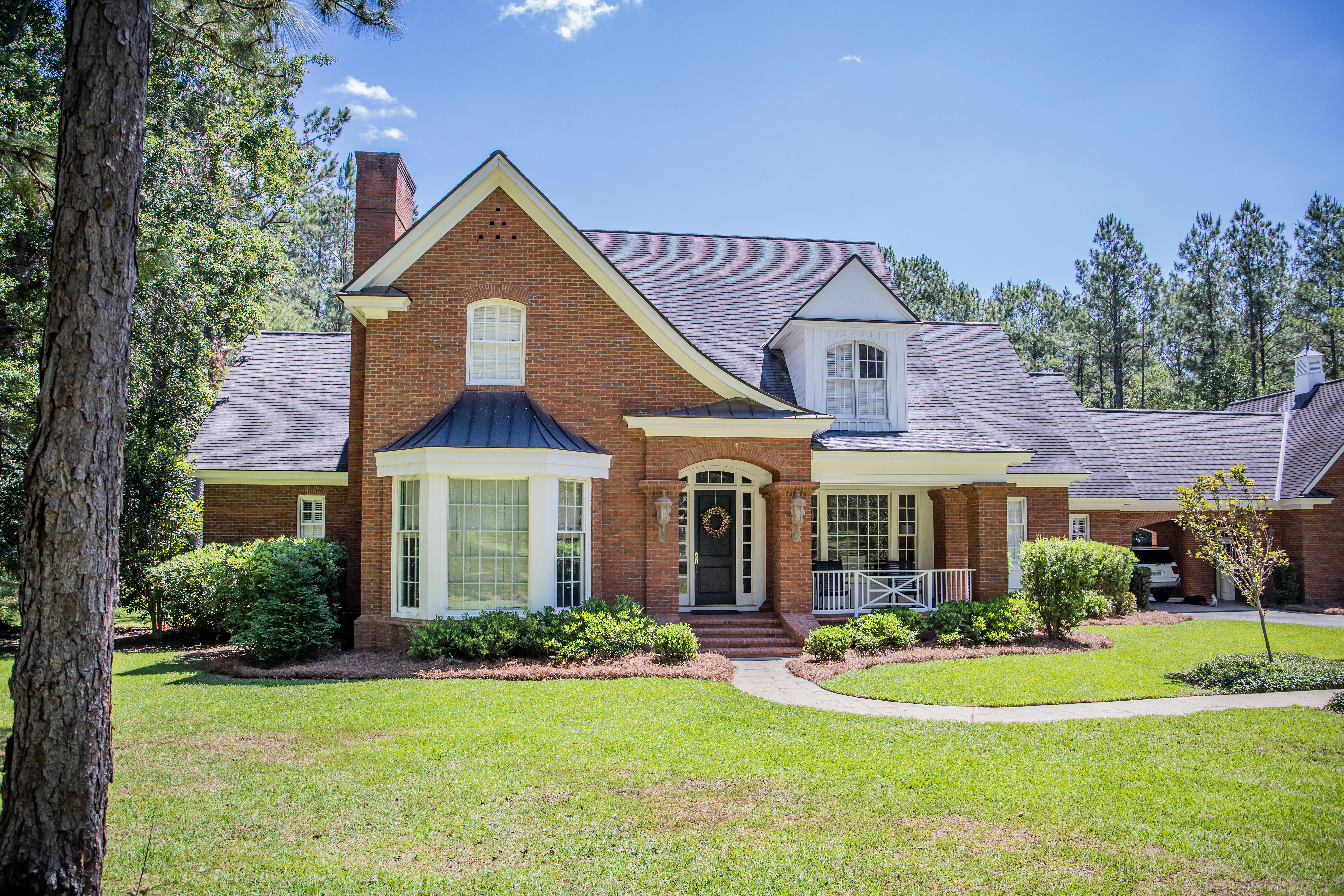
Brick has timeless elegance, and many people choose real, solid brick for its durability and attractive aesthetic. Solid brick, however, is expensive and needs to be installed during construction, leaving little room for changes down the road.
For that reason, homeowners, builders, and contractors alike may decide to use brick veneer instead. If you’re on the fence about which brick option is best for your home, or you’re not sure of the advantages of brick veneer vs. solid brick, this one’s for you!
Here, we’ll discuss:
- What is Real Brick?
- Is Brick Veneer Real Brick?
- Brick vs. Brick Veneer
- Advantages of Brick vs. Brick Veneer
- Disadvantages of Brick vs. Brick Veneer
What is Real Brick?
Regardless of the type, the main ingredient in a brick is clay. After the clay is harvested, it is mixed with other ingredients like sand, lime, iron oxide, or fly ash.
Up until the mid-1900s, most homes were built using two or more layers of real brick held together by brick headers. Solid brick construction is also known as double brick, solid brick, or brick and block construction.
With this type of brick construction, the brick walls provide all of the structural support to the building, so the brick must be installed during construction. A home that’s constructed using real brick only, is expensive and is no longer a popular way of building.
Is Brick Veneer Real Brick?
Brick veneer is used for aesthetic purposes, but does not provide structural support. Instead, brick veneer is installed to cover existing walls to create the illusion of real brick, without all the added weight, time, and expense.
There are two basic types of brick veneer:
1. Brick Veneer Made From Real Bricks

Also known as “face brick”, this type of brick veneer is actually a single layer of real full-size, fill-thickness brick built to cover a wood or steel framed house. This type of brick veneer is installed using mortar.
2. Faux Brick Veneer Made of High-Density Polyurethane
 Rustic Faux Brick Panel in Chicago Red
Rustic Faux Brick Panel in Chicago Red
Faux brick veneer is a thin, lightweight panel that is molded to look like real brick. These panels can be cut to fit using basic woodworking tools and installed by fastening them to an interior or exterior wall with adhesive and screws.
Exterior veneer of any kind doesn’t have to be installed during construction. Most often, homebuilders will frame the home with wood or steel, then add insulation, a house wrap and a drainage layer to protect the home from moisture. Then the brick veneer is added. This gives you more time to choose your brick veneer style and color and provides more opportunities to make changes to the look of your home later.
Brick vs. Brick Veneer
Brick veneer is a vastly different material from real brick. Aside from what they’re made of, some of the key differences include their weight, cost, ease of installation, maintenance, insulative properties, and aesthetics.
| Real Solid Brick | Real Brick Veneer | Faux Brick Veneer | |
Weight |
The structure of a real brick home is the brick itself. On its own, real brick is very heavy, and is best handled by a professional. | Real brick veneer can add excess weight to the structure of your home. Be sure your home is prepared for the extra weight. | Lightweight, and easy to handle on your own. Faux brick won’t put any excess strain on the structure of your home. |
Ease of Installation |
Since real brick is structural, it must be installed during construction by a professional mason. Building a real brick home will take longer than adding brick or faux brick veneer to a home’s framing. | It’s recommended to hire a professional mason to install real brick veneer to keep the rows straight and ensure proper moisture control. Be sure to take into account the availability of local labor. | DIY-friendly using detailed instructions and simple tools and materials. The thin, lightweight panels can be installed by just about anyone, and the process is much faster than laying and mortaring solid bricks row by row. |
Maintenance |
Must be properly maintained so moisture doesn’t sneak behind the bricks. It's recommended to hire someone to fill cracks or crumbling bricks with mortar, which can increase your overall costs. | Once a year, it's recommended to wash it using soapy water and a scrub brush and check the veneer for mold, or loose mortar. Maintenance can also factor into your total brick veneer cost. |
Requires little to no maintenance. Clean using mild, diluted soap at least once annually to reduce your risk of mildew buildup. |
Insulation |
Real brick is a poor insulator, which may increase your utility bills. | While brick itself is a poor insulator, an extra insulation layer is added behind real brick veneer during the framing process. | Like real brick veneer, it's installed over top of an already insulated wall, so faux brick veneer is a more energy-efficient material than real, solid brick. |
Aesthetics |
Provides the most authentic, timeless look and rustic texture possible. Colors are based on what is available at the time of construction. | Made from real brick, it gives your home the same look and feel as a solid brick home but may have slightly different patterning. | Hand-crafted using molds of real brick to give it the same look and texture as real brick. |
Advantages of Brick vs. Brick Veneer

Contemporary Faux Brick Wall Panels in Red Stone
Even though it may not be the real thing, brick veneer has a lot to offer! These advantages include the items described below.
Compared to real, solid brick, brick and faux brick veneer:
- Costs less to purchase, ship, and install
- Is easier and faster to install
- Is easier to clean and maintain
- Provides better insulation and sound protection
- Can be installed at any time because it doesn’t have to support its weight
- Looks and feels just like solid brick
- Can be mitered and installed at an angle.
Disadvantages of Brick vs. Brick Veneer
There’s a lot to love about brick veneer. But compared to a real, solid brick home, what are the disadvantages?
Compared to real, solid brick, faux brick veneer:
- Isn’t as durable. If used outside a landscape border is needed to prevent impact from string trimmers.
- Can cause moisture issues if not installed properly
- Won’t stand up to natural disasters like tornadoes or hurricanes as well as a solid brick home
Is Faux Brick Veneer Right For Your Project?
The decision to go with real, solid brick construction vs. faux brick veneer comes down to your budget, your timeline, installation preferences, and how much time you want to spend maintaining your home.
If you’re interested in adding a gorgeous brick-like appearance to the interior or exterior home, faux brick is the easiest and most cost-effective option. With faux brick veneer, you can get the same look and texture without the high costs of materials and installation.
No matter what look you’re going for, AZ Faux has the faux brick veneer style and color to make your home design dreams come true!
